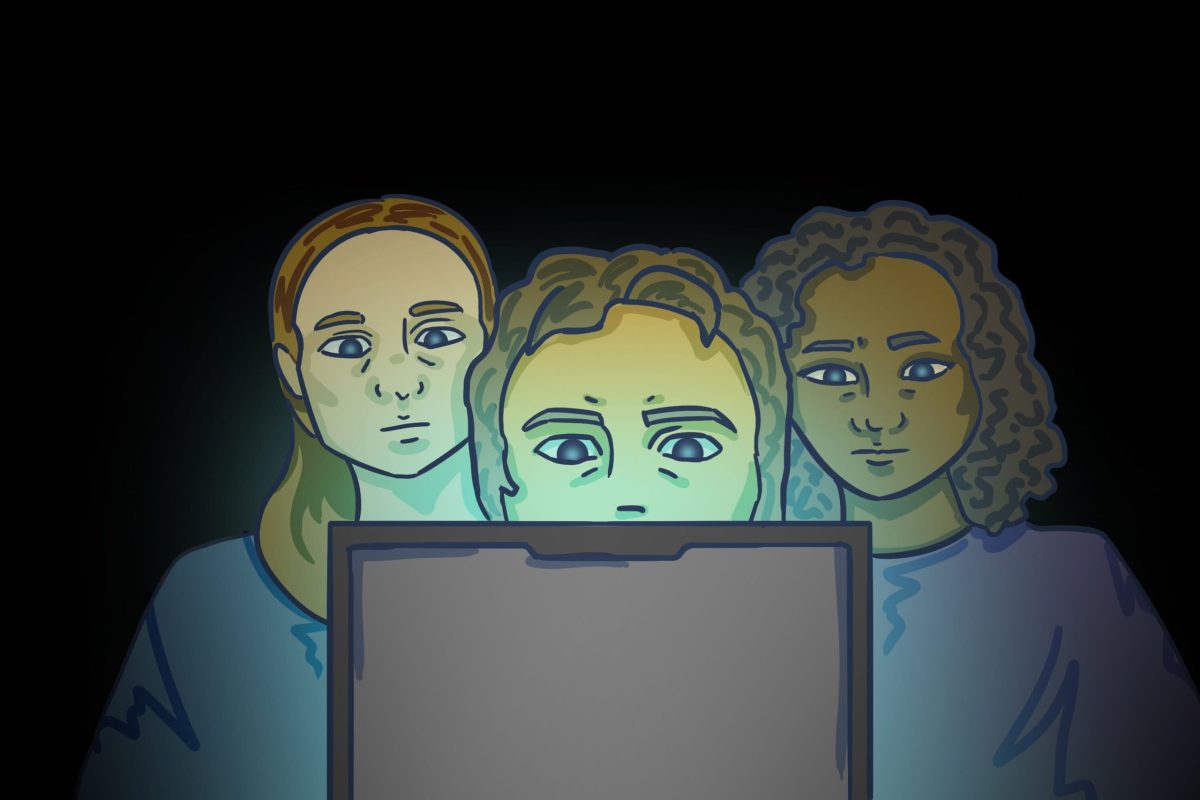What if I told you that the average secondary-aged student spends 4.8 to 5.8 hours per day on social media? Would you believe that most students in the middle school to high school range spend up to six hours more than they are recommended to on their phones per day? Honestly, these statistics are extremely concerning, but not so surprising. The amount of time that the average teenager is spending on their phones, computers and iPads is bound to change their minds and bodies.
According to a recent Gallup study, the average 17 year old is spending 5.8 hours a day on social media alone. Take a moment to think about that. There are 24 hours in a day, eight recommended for sleep, six spent at school and at least an hour combined in eating. That leaves nine hours left in our day, and if almost six out of nine of those precious hours are used up by poisonous screen time, how much time does that leave us? Three hours. Three hours to talk to friends and family, participate in an extracurricular activity and spend time with loved ones. Additionally, some students also bear the responsibility of work and homework, which are required to be completed in this time as well.
If this is news to you, take it from the students themselves. According to students like junior Finn Jay, lots of students seem to be addicted to technology, which in turn reduces students’ attention spans.
“We’re just always used to having our computers with us,” Jay said. “[We] are used to having everything accessible to us whenever we want, so whenever we don’t have technology, we’re a little bit antsy [because] we’re not used to being bored.”
It’s no secret that most high school students, willingly or not, are in some way addicted to technology. Whether their technology addiction stems from their feelings of needing technology to be happy, be entertained, stay in communication with loved ones or to complete most homework assignments, which are done online. But it’s not just the overuse of technology that concerns me. It’s the effects of technology that are the most unsettling.
Why should we be worried about screen time? There was a study done at Yale School of Medicine which states that “youth who spent the most time on their digital technology were statistically more likely to exhibit higher levels of internalizing problems two years later.” Internalizing problems can result in depression, anxiety, social anxiety and other similar issues. For students in high school and college, these damaging side effects are seemingly inescapable. With most of school work being online after the pandemic, there is no way of avoiding staring at a screen for most of the day.
This is especially true from the perspective of some teachers and parents, who have seen first-hand the increase in technology use throughout their lives.
“I think I’m pretty lucky that I had a huge chunk of my childhood that wasn’t centered around screens,” English teacher Emilie Bowden said. “People didn’t really start getting cell phones until I was in seventh or eighth grade. Technology was really just if we watched TV at night and we did that as a family. Those were good days, back then.”
It is clear that the issue does not just center on the extreme overuse of technology, but also on the effects that technology usage can have on decision-making. There is a blatant over-reliance on technology that is showing through the in habits of students and teachers.
Clinical Director of the ADHD Center for Evaluation and Treatment Michael Manos said in an article that “there’s no question that screens are certainly impacting how children react to directed-attention, effortful tasks — that is, the kind of attention that we use to self-regulate and accomplish difficult work.” This doesn’t bode well for the next generation who will need to make countless important decisions in their futures.
As much as we want to eliminate screen time and only use our phones and computers for the recommended amount of time, this can be unrealistic. So, what can we do to create more of a balance between our time on and off the screens?
“I think especially post COVID, it’s important to get kids away from screens and to have them remember what it’s like to handwrite things,” Bowden said. “I’m a huge believer in the muscle memory power that it gives. Some experts suggest putting your phone in a spot that is not easily accessible when you get home, others suggest setting a screen-time timer. Ultimately, it might be that we need to reflect on the experiences of previous generations, like time outside, meeting people face-to-face and spending time [with others] in-person.”
We can also use the technique of becoming aware and conscious about our use of technology, and use that to stay in the present moment. It is so important to learn how to become grounded. Whether you achieve this by reading, meditation or just playing with a pet, there are so many ways to take our attention away from the screens. Doing these small tasks can help to dissolve anxiety and even settle a person during an intense episode of ADHD or OCD. It is mostly impossible to completely avoid everyday use of technology, but by taking the time to become calmer and grounded, maybe we can eliminate some of the negative effects of it.
This story was originally published on Wayland Student Press on February 2, 2024.




































